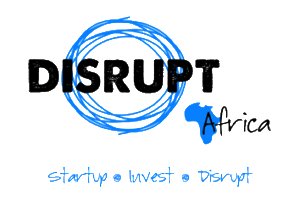As tariffs fuel a fresh wave of crypto liquidations, tokens like XRP and $SOLX are outperforming meme coins and speculative altcoins – proving that utility might be the safest haven in 2025.
Amid the wreckage of yet another market-wide crypto correction, a surprising trend has emerged: tokens tied to real utility are holding their ground – even as liquidations pile up and macroeconomic tensions drag prices lower.
One of the standout performers in this chaos is Ripple’s XRP, which has managed to preserve an impressive 81.6% of its circulating supply in profit, according to data from Glassnode. In contrast, more speculative tokens – such as Solana’s SOL – have suffered steep losses, with just 31.6% of its supply currently in the green.
The divergence comes as global markets digest the latest escalation in the ongoing tariff war between the US and several key trading partners. As reported earlier this week, over $500 billion has been wiped off the digital asset market in the past month alone, with nearly half of that lost in just 24 hours.
Bitcoin has slid back to $74,000 and Ethereum is struggling to hold above $1,550, marking one of the worst quarters for the altcoin since its inception. Yet XRP has remained remarkably stable – a reflection of its deep integration with cross-border payments and sustained demand from institutional corridors.
Also defying the broader downtrend is Solaxy ($SOLX) – a Layer 2 scaling solution designed for the Solana blockchain that has raised nearly $30 million in its presale alone. Built to solve Solana’s most persistent challenges, Solaxy isn’t just weathering the storm – it’s attracting more interest by the day.
XRP’s Strength in Numbers
Despite market-wide turbulence, Ripple’s XRP has continued to show resilience. With over 81.6% of its circulating supply still held in profit, XRP’s performance sharply contrasts with that of Ethereum (44.9%) and Solana (31.6%), both of which have seen their profitability metrics collapse.
Even more telling is the state of TRON’s TRX, which is leading the market with 84.6% of its supply in profit. These numbers suggest that tokens with focused utility – such as TRX’s dominance in stablecoin settlements and XRP’s role in cross-border banking – are becoming preferred safe havens during times of volatility.
Whale sell-offs and token unlocks have continued to destabilise Solana in recent weeks. A $200 million unlock at the start of the month sparked a major pullback from $290 to $101, although it has since recovered to trade around $109.
But without a Layer 2 architecture, Solana remains vulnerable to congestion and pricing pressure – especially when the network is under load. That’s where Solaxy enters the picture.
Solaxy: The Project Reinventing Solana’s Infrastructure
Solaxy ($SOLX) isn’t just a meme coin riding the Solana wave. It’s a purpose-built Layer 2 scaling solution aimed at solving Solana’s most urgent weaknesses – namely congestion, high-volume transaction load and network inefficiency during peak periods.
Where Solana promises high throughput, Solaxy delivers it more consistently. By bundling off-chain transactions into scalable rollups, Solaxy dramatically reduces pressure on Solana’s mainnet. This not only leads to smoother performance but also paves the way for low-fee trading, DeFi deployment and cross-chain integrations.
JOIN THE UTILITY WAVE – SECURE YOUR $SOLX TOKENS NOW
And it’s not just theory. The platform has already raised $29.5 million in presale funding, with each token priced at $0.001688. More than 8.3 billion SOLX tokens are already staked, lured by an attractive 137% APY.

Why Investors Are Choosing Utility Over Hype
The fall of highly speculative altcoins during the current market dip has led to renewed interest in tokens with real utility, clear roadmaps and verifiable development milestones. Solaxy ticks all these boxes – and more.
Its website offers seamless multilingual support, a live staking dashboard and a detailed roadmap outlining the project’s short- and long-term milestones. The token’s smart contract audit by Coinsult has added credibility and the development team has continued to post technical updates showcasing the platform’s modular build and real-time infrastructure enhancements.
In one of its most recent upgrades, Solaxy integrated a sequencer built with the Sovereign SDK, which introduces soft transaction confirmations for faster user feedback. The team also improved data caching and streamlined serialization methods to reduce lag across high-volume transaction flows.
Further integration with Hyperlane is strengthening bridge security, which will be crucial as the project moves toward production-grade stability and full Ethereum compatibility. That interoperability between two of crypto’s most active ecosystems – Solana and Ethereum – is part of what’s fuelling SOLX’s rapid rise.
$SOLX: Designed for Long-Term Growth
Solaxy’s tokenomics also reflect a long-term vision. The $SOLX supply is carefully allocated: 30% to development, 25% to community rewards and significant reserves earmarked for treasury, marketing and listings. This structured approach stands in contrast to meme coins or low-float tokens that are often at risk of manipulation.
BUILD WITH SOLAXY – EXPLORE THE NEXT PHASE OF SOLANA’S GROWTH
And while many projects have been exposed for recycling hype or borrowing liquidity from other ecosystems, Solaxy is building foundational infrastructure that benefits users, developers and cross-chain applications alike.
The Future Belongs to Utility
The latest correction in crypto markets may have been triggered by geopolitical friction, but the underlying message is far more enduring: projects without clear use cases are vulnerable, while those tied to functional ecosystems can weather volatility.
Whether it’s XRP’s role in real-world finance or Solaxy’s engineering focus on blockchain scalability, the smartest capital in crypto is moving toward tokens that serve a purpose – not just a narrative.
As the market stabilises and investors reassess where value truly lies, utility coins like $SOLX are likely to lead the next wave – not as hype-driven rockets, but as the backbone of blockchain’s maturing infrastructure.


